Welcome to The Ultimate Content Marketing Guide to Succeed in 2024! Content marketing is an essential part of any digital marketing strategy. As the world continues to move towards a more digital-first approach, content marketing has become increasingly crucial for businesses looking to reach their target audiences and drive conversions.
This blog will provide the latest tips and best practices for content marketing success in 2024 and beyond. Whether you’re a beginner or an experienced marketer, you’ll find something here to help you reach your goals. So let’s get started!
What Is Content Marketing?
Content marketing is a strategic approach focused on creating and distributing valuable, relevant, and consistent content to attract and retain a clearly defined audience — and, ultimately, to drive profitable customer action.
It’s a tactic of inbound marketing- a non-interruptive methodology whereby brands share valuable information with customers to obtain business and loyalty. While outbound marketing involves proactively reaching out to consumers to get them interested in a product, inbound marketing focuses on drawing prospects to your website.
Research shows 79% of B2B marketers and 70% of B2C marketers use content marketing as part of their overall marketing strategy because it generates 3x as many leads. Supercharging your sales funnel with content at each stage of the buyer’s journey guarantees a steady flow of leads and sales.
Why Is Content Marketing Important?
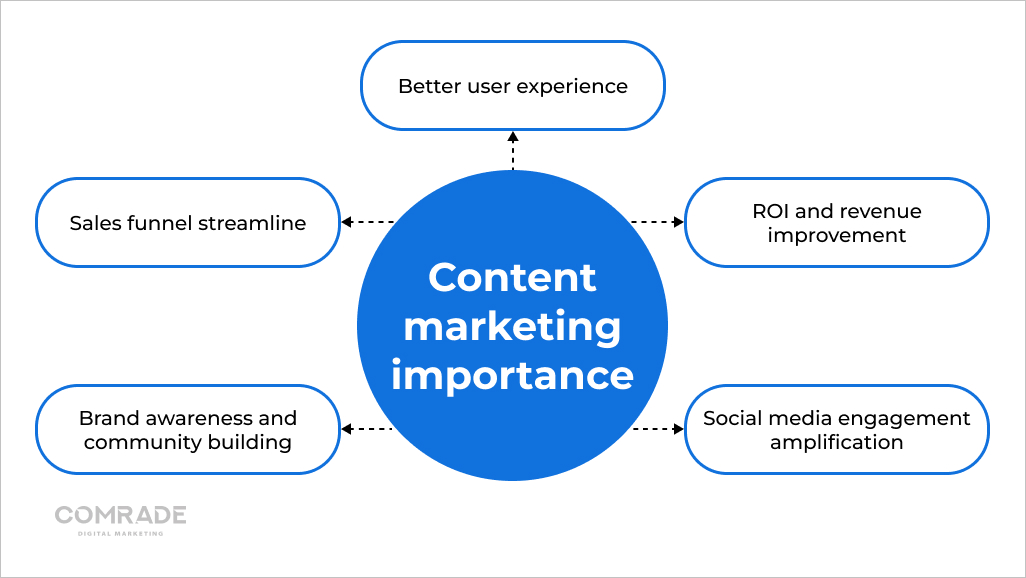
Content marketing is essential for businesses to reach and engage their customers. Here’s why you should take the time to develop a relevant content marketing strategy:
- Better user experience: 70% of consumers prefer learning about a company through articles to advertisements. Customers far more appreciate content marketing because it provides valuable information.
- Improve ROI and revenue: Content marketing costs 62% less than traditional marketing. Its targeted approach lures prospects more likely to be interested in what you offer; thus, content creation attracts better-qualified leads.
- Amplify social media engagement: The latest stats indicate that 71% of small-to-mid-sized businesses use social media for marketing, and of that percentage, 52% post at least daily. Social media marketing is highly effective due to its broad potential reach, interactivity, and targeting capabilities.
- Build brand awareness and community: Unrelenting competition and the surge of conscious consumers have made “hard selling” null and void. Content marketing basics focus on selling your business’s values rather than its products. As it is, 82% of shoppers “want a brand’s values to align with their own, and they’ll vote with their wallet if they don’t feel a match.”
- Streamline sales funnel: Content marketing and SEO target each conversion funnel stage: awareness, consideration, or decision. It doesn’t matter where your customer is in their journey or what they’re looking for. You can deliver content that addresses their needs at the precise time they find most valuable.
5 Main Types of Content Marketing
The internet and your customers are dynamic – constantly seeing the same content is tiresome. The more your brand invests in content diversification, the better. At the very least, you should produce the following:
1. Online Content Marketing
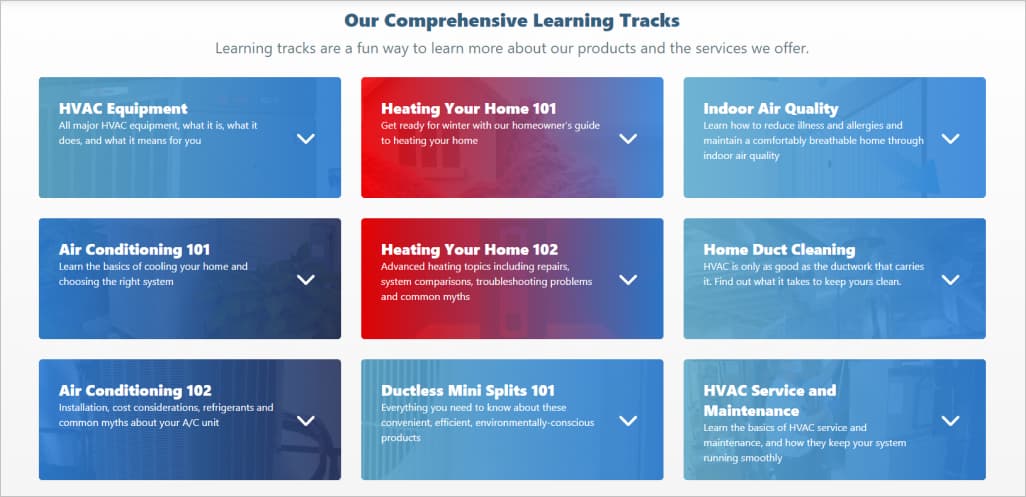
Blog content marketing involves publishing any material you put out on the internet – social media, blogs, emails, videos, and podcasts -including your web pages. An effective online marketing plan gets you higher SEO rankings and attracts the right audience at the opportune moment.
2. Blog Content Marketing
Blog content marketing promotes a website, business, brand, or service through blogs. This includes developing a website blog, sharing information across multiple blogs, and creating posts on third-party blogs. Additionally, it could involve hosting guest bloggers, creating content specifically for blogs, and engaging followers through comments and social media.
3. Infographic Content Marketing
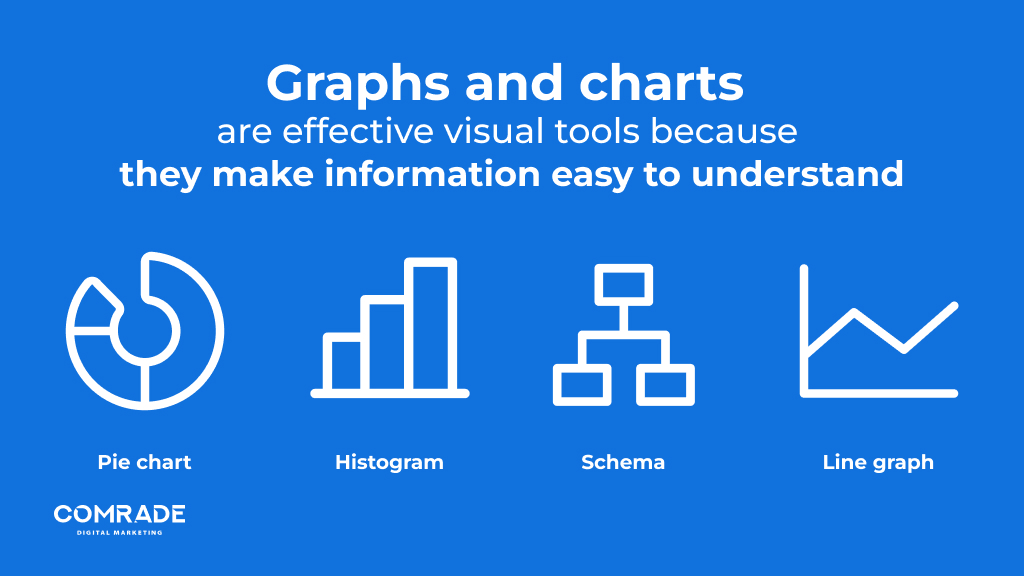
Infographic content marketing is creating and distributing visuals such as graphs, charts, diagrams, and other visual content to communicate data or concepts to a target audience. It allows you to present data, share insights, and tell a story in just a few seconds.
4. Video Content Marketing
People spend a minimum of 1 hour and 40 minutes watching videos daily, hence why 86% of marketing professionals use video marketing. Like other content production, it involves producing and distributing content to reach and engage customers. Video content can range from tutorials to promotional videos to advertisements, customer testimonials, product and service reviews, etc.
5. Social Media Content Marketing
Did you know 52% of brand discovery online comes from social media? Social media content marketing entails creating, curating, and promoting content to engage and grow an audience on social media channels. At its core, it’s about using platforms like Facebook, Twitter, LinkedIn, and Instagram to reach more leads and speak directly to them.
Create a Successful Content Marketing Strategy in 7 Steps
The content creation process requires careful planning, implementation, and evaluation to ensure that the content created is effective and successful.
- Set SMART goals and KPIs: Goals provide focus and direction, helping to measure performance, stay on track, and ultimately achieve content marketing campaign success.
- Understand your audience: Knowing your audience allows you to craft content that resonates with them and effectively communicates your message.
- Set a budget: Allocating a set sum of financial resources assures you’re spending money in areas that will bring you closer to reaching your marketing goals.
- Choose content marketing channels: Selecting channels that accurately reflect your target audience ensures your content reaches the right people and is optimized for maximum visibility.
- Create content: Creating compelling content optimized for search engines, with keywords and backlinks, is vital for each stage of your marketing funnel.
- Distribute and promote: Sharing your content on strategic channels is essential to increase brand awareness and engagement and drive traffic to your website.
- Analyze and tweak: Keeping content fresh, engaging, and search engine-optimized helps maintain the site’s SERP ranking and relevancy to readers.

1. Set SMART Goals and KPIs
SMART is an acronym for Specific, Measurable, Achievable, Realistic, and Timely. Content marketers use it as a goal-setting guidepost to eliminate generalities and guesswork, making it easier to track progress and identify missed milestones.
For instance, it’s more effective to say you want to “increase leads by 10% every month” than you wish to “increase leads.” The former is measurable and quantifiable; the latter is too vague.
Then, there are KPIs. These metrics let you know how well you’re working towards goals. If we continue with the example of increasing leads, valuable metrics to track would be conversion rates and quality leads.
Other examples of KPIs related to content marketing might include, but aren’t limited to:
- Increasing website visits by 10%.
- Reach 500 newsletter subscribers within 6 months.
- Increase brand mentions by 20% in 3 months.
- Achieve a monthly content reach of 10,000.
2. Understand Your Audience
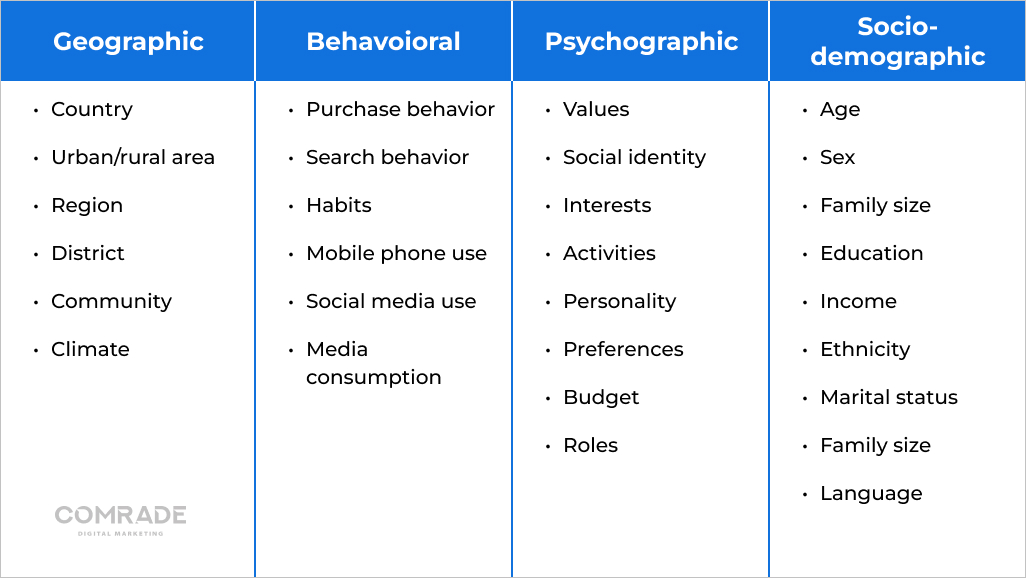
Your target audience is the consumers you want to target with content marketing campaigns to generate sales for your products or services. They are defined by demographics, interests, online behavior, buying history, etc.
Defining them ensures you know where to execute and place your content marketing campaigns to achieve the best results. If you know most of your target audience spends its time on Twitter; then you don’t have to invest in marketing on LinkedIn.
The first step to clarifying who wants to buy from you is identifying those already using your products and services. Once you understand the defining characteristics of your existing customer base, you can target similar people and segment them further – perhaps you’re an active apparel store that appeals to professional athletes and hobbyists.
Content marketers use buyer personas to refine their content marketing strategies. These semi-fictionalized representations of ideal customers (based on actual data and research) guide the content production process. You can develop personas for your business by analyzing data about existing customers, interviewing them, and conducting other market research.
3. Set a Budget
The standard rule of thumb is B2B companies spend between 2-5% of their revenue on marketing and B2C between 5-10%. The discrepancy is because B2C companies typically invest more in marketing channels to reach different buyer personas. Most companies allocate 25-30% of their marketing budget to content marketing.
However, there is no magic formula. We recommend tackling your content marketing budget from a prioritization standpoint: What are the most important marketing goals to achieve? If your website needs to be updated, start there first.
Another approach is to establish specific goals. For instance, instead of asking how much to allocate to your content marketing budget, you can reverse-engineer it by asking: “How much do I need to spend to bring in 100 new customers?”
A well-devised marketing budget aids the content planning process and helps measure and manage your marketing costs, ensuring expenditure is appropriately considered. Setting a budget prevents you from over or underspending on promoting your business.
4. Choose Content Marketing Channels
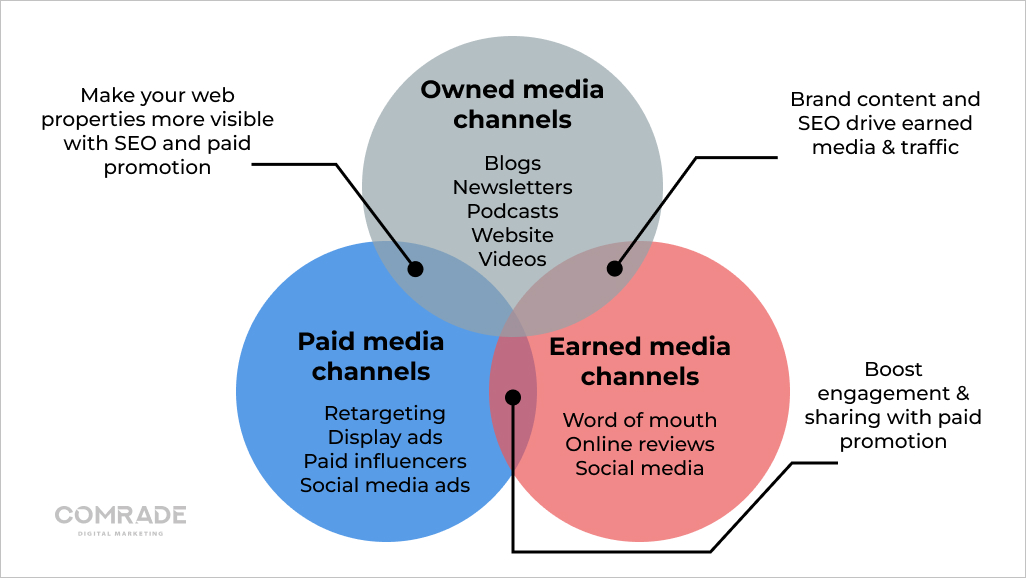
Before choosing digital marketing channels for your business, you must understand your primary objectives, audience, competitors, and budget. Content marketing tools like SEMrush, Ahrefs, WooRank, and Quick Search help dig into competitor data.
To achieve favorable ROI, you must decide which distribution channels to use. Hopping abroad on the latest industry trends won’t necessarily reach your target audience. In digital marketing, there are three types of channels (most marketers use a combination):
- Paid media channels involve advertising and require financial investment, such as pay-per-click advertising.
- Earned media channels require no financial investment, such as public relations, word of mouth, online reviews, and social media.
- Owned media channels are those which involve the creation of content, such as websites, blogs, newsletters, podcasts, and videos.
How to Leverage the Marketing Funnel for Content Marketing
Content marketing is a natural lead-generation tool—integrating user intent with the marketing funnel key. The four stages of the content funnel are awareness, evaluation, purchase, and delight. Each stage serves a specific purpose in your customer’s journey, as do the content and channels you use to reach your customers in those stages.
An example of how this works:
Suppose you’re a personal injury lawyer.
- You write a blog called “When to Sue for Personal Injury.”
- A prospect does a Google Search. Your SEO-optimized blog comes up, so they click on it (They’re at the awareness stage and have yet to decide on a lawyer.)
- When they arrive at your website, you request their email address in exchange for an eBook called “How to Choose a Personal Injury Lawyer.” The prospect has now entered your marketing funnel.
- Next, you send an email outlining your services or promoting them to reach out for a free consultation. (They’re now evaluating if your firm is right for them.)
- You continue to send them strategic content with tempting offers, compelling them to reach out and ultimately hire you.
As far as channels go, we advise investing in search engine marketing, social media platforms, paid advertising, and email marketing. Targeted audience research will reveal which social media platforms work best for your business.
5. Create Content
The fastest way to generate content is to transform your FAQs into blog and video topics. Remember, the point of content marketing is to provide valuable information to your audience, and what better way than to answer the common question they have?
There are other reasons too:
Naturally, Target Longtail keywords
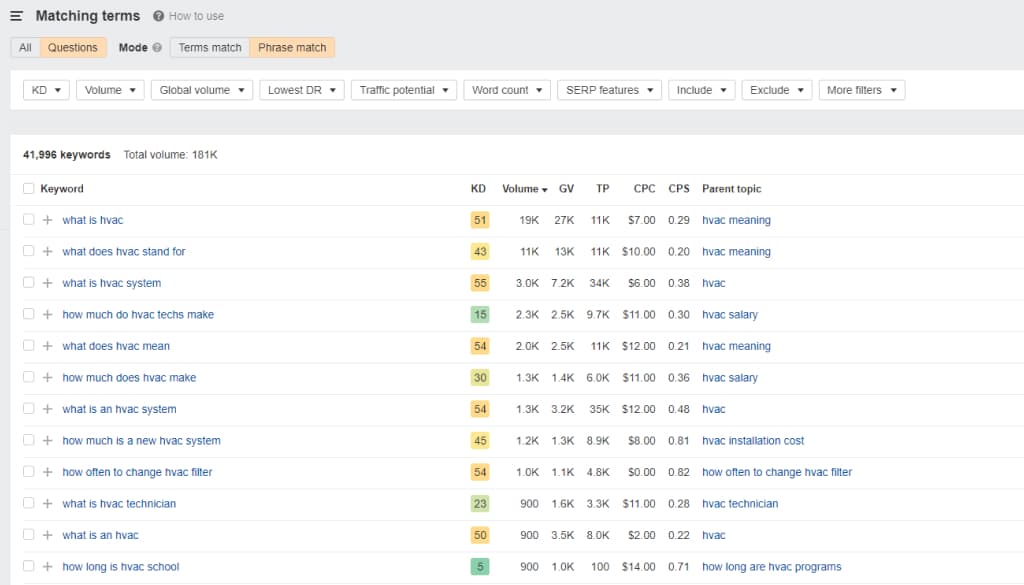
Long tail keywords and voice search have altered how people use search engines. If a user asks a specific question and your FAQ page has a similar answer, it may show up on the search engine results page and bring targeted traffic to your website, even if the search volume is low.
Earn Inbound Links
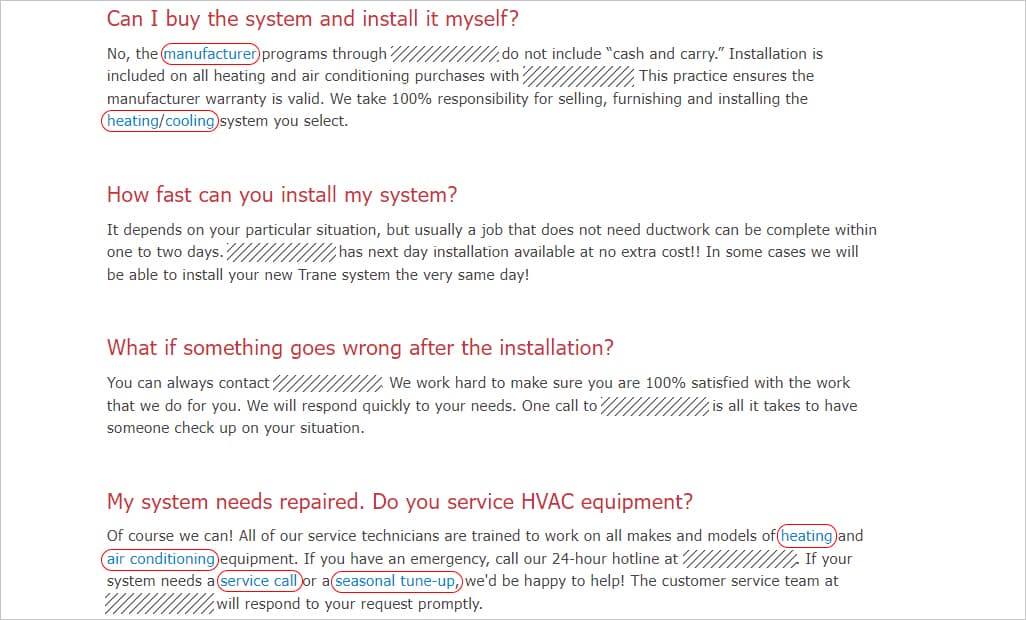
Writing and publishing FAQ pages with answers from knowledgeable professionals (you!) is a great way to attract natural inbound links because it provides valuable resources. Not all website owners take the time to create such content, so if you do, other websites might link to your page instead of writing their own.
Easy to Publish on Social Media
Do you ever wonder what to post on social media? FAQ content is a great way to engage with your target audience since they are likely already looking for answers to their questions. Ask the question on social media and include a link to the page with the answer. While this type of content won’t directly affect SEO, it does help to build brand trust.
6. Distribute and Promote
Content promotion and distribution are not the same things. Content promotion is putting your content on as many channels as possible so your target audience can find you—content distribution targets “high potential” channels to maximize conversions. Pushing your content through email newsletters is a form of content distribution.
Why does this matter? Content marketing is more than just producing high-quality content and sharing it on social media. You need to lay the foundation to expand your content’s reach in a targeted manner that builds brand awareness and produces loyal customers.
Some insightful questions to ask when distributing and posting content:
- What is your goal in creating this specific piece of content?
- Who do you want to read or see your content?
- How does your target audience consume content?
An effective content distribution plan simplifies connecting with the right people at the right time. It encourages them to take the desired action on your content, such as downloading an ebook, subscribing to a newsletter, or scheduling a demo on your website.
After honing your organic content distribution skills, you can explore the possibility of paid distribution through platforms such as Facebook, Twitter, LinkedIn, Google, TikTok, Instagram, Amazon, and the like.
7. Analyze and Tweak
Monitoring and analyzing your content offers insights into customer behavior, trends, and preferences so you can tailor content to align with your target audience and identify areas of opportunity for further engagement and customer satisfaction.
There are five key areas worth the time and effort to track:
- Brand awareness: How well is your business attracting your target market’s attention?
- Engagement: How much time are people spending engaging with your content?
- Customer retention/loyalty: How well is your business retaining customers?
- Lead generation: How many leads have you captured?
- Sales: Are your sales increasing?
Content analysis is a powerful tool for understanding your audience and driving business goals. You can trace patterns and trends impacting your business and better understand what content ideas resonate.
Content marketing is an ongoing process. You always want to optimize your content with the most accurate keywords and distribute it on the highest-performing channels. With analysis, you will know what’s working and be able to tweak your content for improved performance.
There are dozens of metrics and online analytics tools to assist you with this process. Although, truthfully, hiring a digital marketing agency to handle this for you is more accessible, but more on that later.
Content Marketing Examples
All of these forms of content are meant to provide valuable and relevant information that delights users and attracts them to your business.
Blog Content Marketing Example
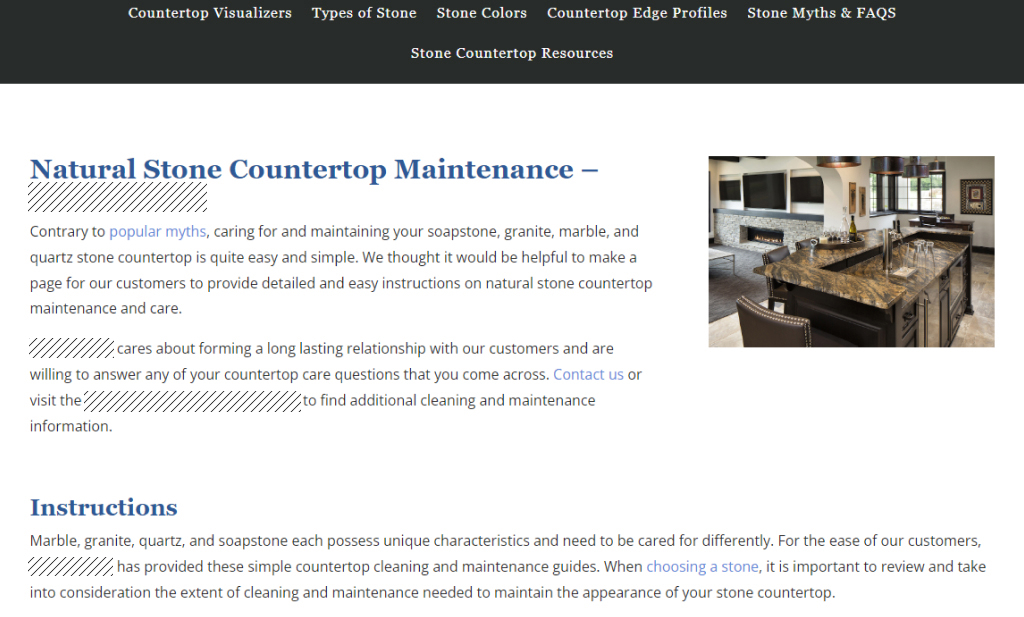
Blogging entails creating and sharing helpful content. You could write about topics related to your industry, such as tips for using products or services related to your business, helpful advice for solving everyday problems, or interesting stories about your company.
For example, if you are a granite countertop installer and fabricator, you might create articles about countertop maintenance and repair or what to consider when choosing new countertops. Blogs also share relevant news and industry updates and provide beneficial resources like ebooks, whitepapers, and infographics.
Infographic Content Marketing Example
Let’s say you are a fitness studio. In that case, you could make an infographic highlighting the physical and mental benefits of exercising, such as increased energy, improved sleep, and better overall health. You can share this infographic on your website, blog, or social media platforms to attract more customers.
Another example of how to use an infographic for content marketing is to create an infographic that explains the process of a complex task. For instance, if you are a landscaping company, you could make an infographic explaining how to fertilize a lawn properly to share on social media channels, your website, and even with customers in the form of a PDF.
By providing a visual guide, you are helping to educate potential customers on the process and give them a better understanding of your company’s value.
Video Content Marketing Example

One of the most popular video marketing examples is the use of explainer videos to help customers better understand a product or service.
Explainer videos are typically short, animated videos that explain the features and benefits of a product or service concisely and engagingly. They are often used on product pages or email campaigns and can be a great way to engage potential customers quickly.
Companies also use customer testimonials to show potential customers how satisfied their current customers are with their products or services. Testimonial videos can be an effective way to showcase the value of a company, and they are a great way to instill trust in potential customers.
Social Media Content Marketing Examples
Any business can use social media content marketing to reach and engage with its target audience. Sometimes you may even wish to use social media’s built-in tools to generate content, such as Instagram Stories or Reels.
Twitter Content Marketing Examples
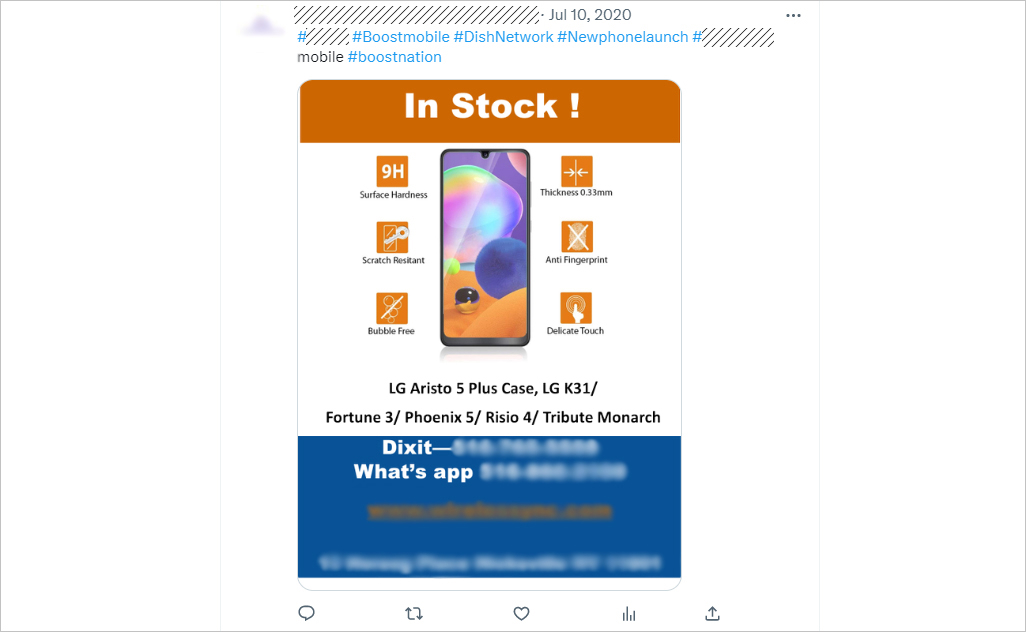
One example of Twitter content marketing is using a hashtag to promote a product launch. For example, if you’re launching a new type of mobile phone, you might create a hashtag like #NewPhoneLaunch and encourage customers to use it when talking about the product on Twitter. This creates buzz and excitement about the product launch.
Instagram Content Marketing Examples
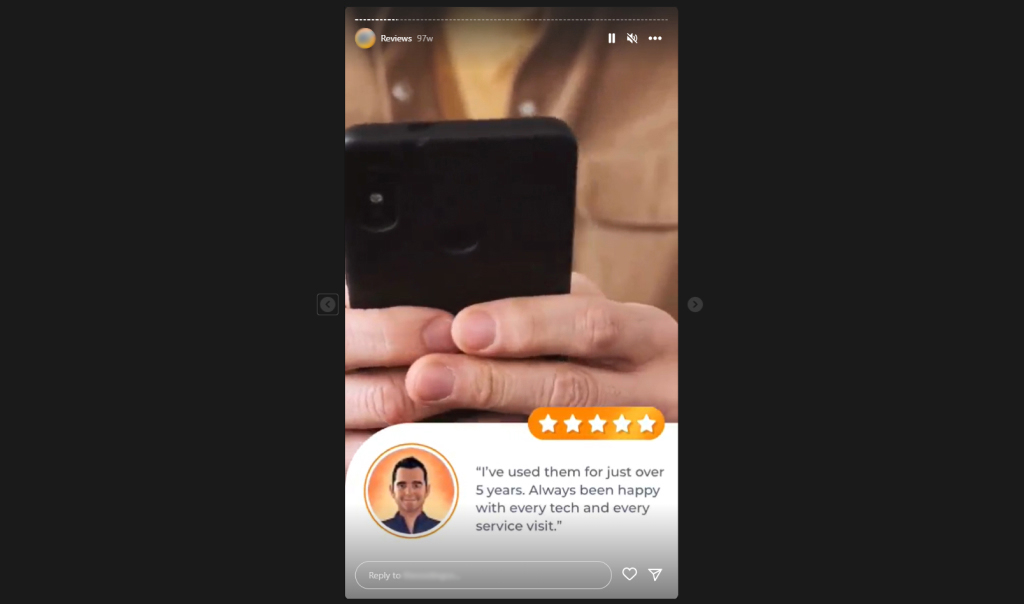
Influencer marketing is popular on Instagram. Partnering with influencers and asking them to post about your product or services spreads the word to their audiences and extends your online reach.
Sponsored posts, product reviews, and giveaways are some examples. Some brands also repost user-generated content (UGC) to strengthen relationships with their target audience or create stories and videos. It depends on what your content marketing goals are.
Facebook Content Marketing Examples
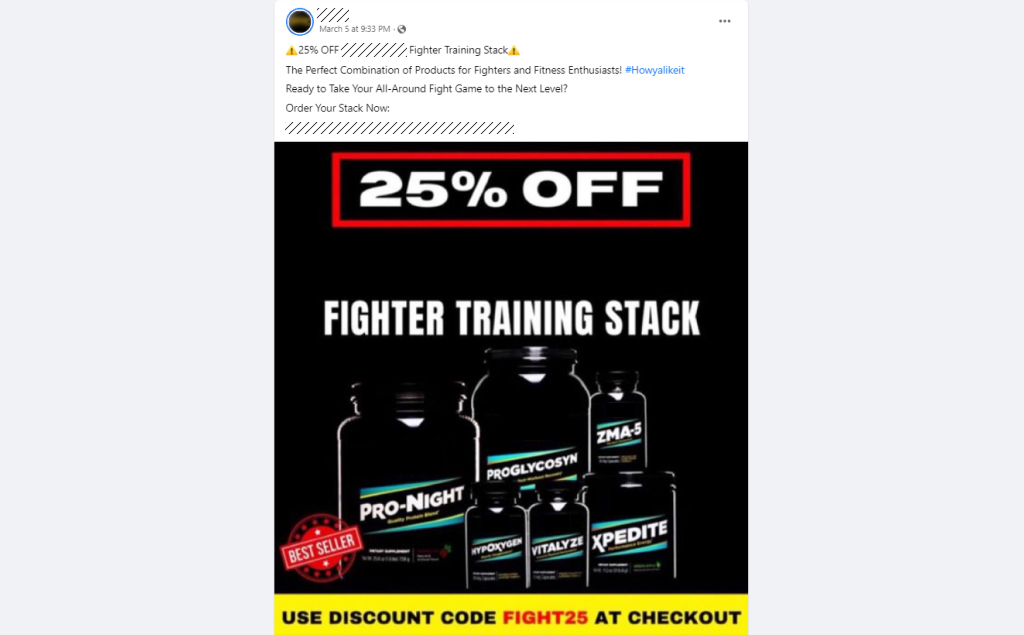
An example of Facebook content marketing is using your professional business page to promote a new product line. You could post photos of the products and provide detailed product descriptions and discounts or special offers. You can also use your Facebook page to hold contests and giveaways or even host live Q&As to engage with customers. Leveraging targeted Facebook Ads will also drive more sales.
5 Tips to Improve Content Marketing Efforts
The content playbook sounds simple: attract prospects with content relevant to each stage of their buying journey and extend offers that motivate them to contact your sales team for a demo or discussion.
Take it from us: When it comes to content marketing, there’s always room for improvement.
1. Offer Value to Your Users
The current marketing paradigm is customer-centric. You provide customers with value before they give you their money. Psychologically, this approach is rooted in reciprocity, which posits that people who receive a gift are hardwired to reciprocate – in this case, buying what you have to offer.
That’s because content marketing is focused on identifying and solving your customer’s problems, not just selling your products or services. It’s the only form of marketing in which your content can be just as valuable as your products and services.
Consider offering valuable content (like an in-depth, downloadable guide), seminars, or even some services! For example, at Comrade, we provide an extensive free digital marketing audit for your firm’s website free of charge.
2. Grab Your Audience’s Attention
“On average, five times as many people read the headline as the body copy. When you have written your headline, you have spent eighty cents out of your dollar.”
This quote by David Ogilvy rings true even today. Just look to social media for confirmation! It doesn’t matter how good your content is; if no one clicks through your post’s headlines, it will not matter. However, that’s not to say you should subscribe to tactless clickbait tactics.
Instead, your headlines should be specific, easy to understand, and lead to a reaction. Google takes note of content click-through rates (CTR) – a lack of click-throughs- and will demote your content in SERPs.
Search engine optimization for user intent should be your priority before search engines. As such, it’s always a good idea to include your main keyword within the title, but do just what is necessary!
3. Don’t Let Your Content Turn Stale
No matter how hard you work on a piece of content, it will age and must be updated. Seize this opportunity! Instead of writing a new post, it’s better to update the original. This ensures you don’t lose SEO juice from the original URL.
- Do some in-depth content research on the topic to find out what has changed.
- Updates may require that parts of an article are rewritten or a video segment is updated.
- Cite authoritative, new sources where possible.
- Ensure all links work (and are up-to-date – you don’t want a link to a source older than a year).
- Replace irrelevant images.
- Revitalize the introduction and conclusion.
How do you determine which content should be updated? Conduct an annual content audit!
4. Repurpose Your Content
Recycling existing content can help you maximize efficiency and reach new audiences. Regularly updating content can show potential customers that you are an active and engaged business, which can help to build trust.
Also, creating helpful, engaging content takes time and talent, so repurposing it is smart.
If your podcast team has published a successful video episode, you could use that episode’s topic to create a blog post. Additionally, suppose you started a blog post that achieved good results. In that case, you could make YouTube videos about the same topic to appeal to viewers.
Repurpose your content, so your audience has more than one viewing opportunity. Your readers, viewers, and followers are likely busy, so a new content promotional strategy on a piece of content that needs to be seen again is a great way to grab their attention.
5. Write Long-Form, Evergreen Content
Evergreen content is timeless and not tied to current events or trends. It remains beneficial and valuable to readers for many years after its initial publication. Examples of evergreen content include how-to guides, tutorials, and resource lists.
Establishing your business as an authority on a specific topic through long-form content helps customers find you when they search for related issues or questions you’ve answered. Many different elements go into SEO, but focusing on providing quality evergreen content is a great start.
Long-form content is the most popular and highest-ranking type of content. While some marketers consider 700+ words to be long-form, others only think 1800+ words to be sufficient. No matter what length you choose, it’s important to note that Google prefers content-rich sites.
Common Content Marketing Mistakes
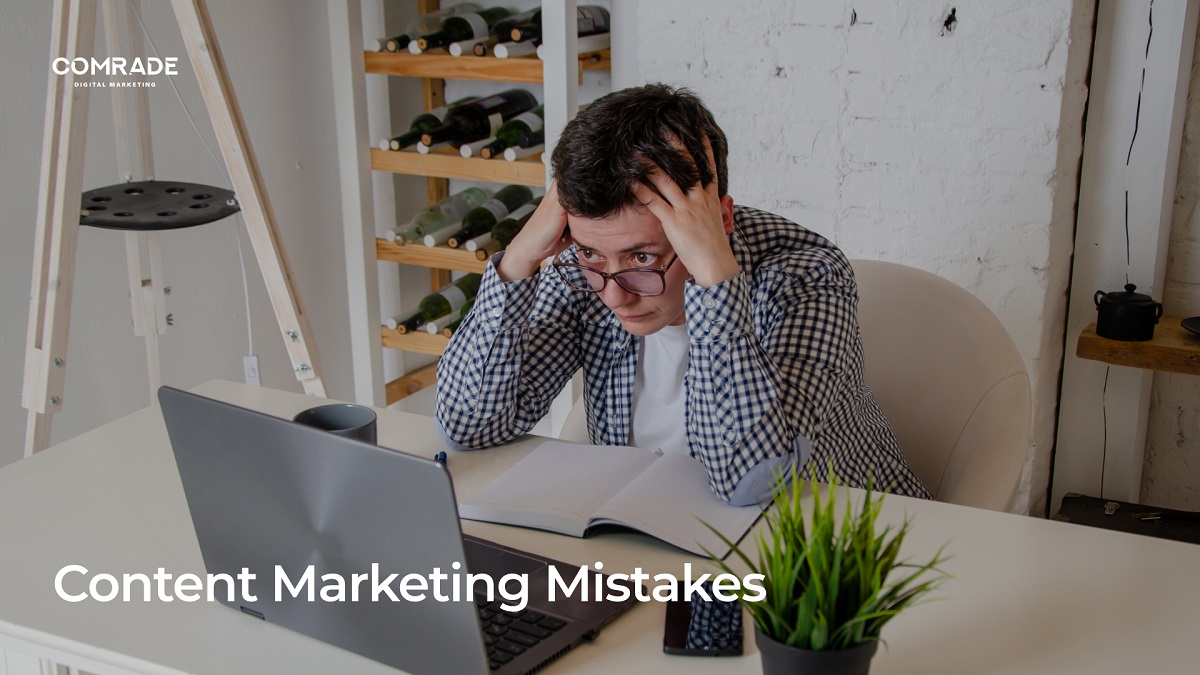
Overall, content marketing is a complex process that, for many, takes series after series of trial and error. You’ll be a step ahead of most if you avoid these common content marketing blunders:
Creating Mindless Content
Every piece of high-quality content you create should add value and inspire. While it’s true that consistency is critical when it comes to your content marketing strategy, this doesn’t mean you need to publish videos once a week for the next five years. Consistency also refers to brand voice, tone, identity, etc.
There’s nothing worse than content that is shameless self-promotion or is so “thin” that engaging with it is a complete waste of time. If search engines like Google think your content is poor or thin, your website will be penalized and rank lower.
Just Leaving Your Blog Post
So, you have a blog. Are you leveraging its content marketing capabilities to the fullest? Did you know, according to BlueLeadz, blogs with images receive 94% more views?
Humans are visual creatures. The better your blog looks, the more engagement it will receive. But, if your blog isn’t performing as well as you’d like it to, there are additional hacks you can apply that go beyond just upgrading images.
Include SEO keywords in your blog titles and experiment to see what works best. Every so often, a simple headline change can cause an immense increase in traffic. Other tips include having easy share buttons on social media channels and creating informative, more in-depth content.
FYI: A HubSpot study reported the most types of blog content shared were: how-to-articles, lists, “why” posts, and “what” posts. The content may be already there, and it needs strategic editing.
Commercialization
Content marketing aims to sell, but the process differs from announcing your products/services’ prices over a loudspeaker in a supermarket. It is subtle and takes time.
People consume content to learn, not to be sold something. Content marketing builds visibility, credibility, and brand awareness. You gain trust through community engagement, especially in eCommerce, where consumers purchase products without seeing them in real life.
Needless to say, your content marketing should feel different from traditional advertising selling. Since people consume content in a non-buyer frame of mind, you have to sell differently. The answer isn’t surprising at this point- it’s by being helpful.
Should You Hire a Content Marketing Pro?
Yes, hiring a professional marketing agency like Comrade is a no-brainer if you want to drive revenue and increase ROI. Here’s why:
They’re Experts at SEO
Have you thought of the hours spent preparing, learning, and practicing content marketing skills? If you’re unwilling or don’t have the time to prepare, write or record your first piece of content, it’s better to outsource it to experts.
A content marketing agency understands how Google works and how to position and distribute your content for it to rank in organic searches. Including the right keywords is an essential element of SEO, but there is more to it than that.
Successful SEO requires proper headers, related keywords, effective sentence and paragraph structure, correct image formatting, and technical preparation to ensure informative content is optimized to satisfy Google.
Anyone can create content, but a skilled content marketing team ensures it ranks high in search engine results and attracts more traffic to your website.
They’re Solely Focused on Content Marketing
Finding consistent blocks of time to create and publish content can be challenging. This problem is often seen when a brand attempts to manage its content but needs the right strategists on staff to develop and publish optimized content regularly.
Without dedicated content creators, urgent issues take precedence over content, resulting in subpar content, and missed publishing deadlines. Additionally, Google is not concerned with what other tasks you are managing. All it cares about is consistent, top-notch content, and that is something your competitors are delivering.
A digital content agency’s expertise, time, and bandwidth enable them to focus on your content. They update your digital presence with authoritative content, which signals reliability to Google. This results in better rankings, leading to higher returns on investment for companies that outsource their content rather than attempting to do it themselves.
Their Content Delivers ROI
No challenge is too big for an agency with countless years of experience creating content for the web. They have published thousands of articles, crafted pages of email marketing copy, and developed numerous social media posts.
Their expertise lies in understanding the importance of researching keywords, creating content that is both engaging and drives real traffic, and knowing how to adjust tactics in the event of a drop in rankings or a plateau in website traffic.
The team creates content that captivates readers and is not overly promotional. This allows your brand to reach audiences you would not have been able to connect with. Moreover, an agency can craft content to meet your business objectives, address your customers’ issues, and emphasize your distinct messaging and advantages.
These value-adding strategies guarantee that your content promotes brand recognition and encourages new customer interaction more than a conventional blog post.
They Know How to Reach Your Target Audience
Not all web traffic is beneficial. Creating exciting and well-written content is insufficient; it must also attract the right organic web traffic by addressing the correct issues your business can solve. Content that doesn’t drive business success wastes time and energy.
An experienced content agency can help you identify the perfect combination of keywords to maximize your lead-generation efforts. They will work to understand your brand, its competitive landscape, and your target audience’s needs and pain points.
With this knowledge, they’ll perform SEO services to ensure your chosen keywords are relevant to your business and resonant with your target audience. Finding the right balance of keywords to generate leads effectively is a challenging task, but an experienced content agency will implement the perfect combination.
They Save Time and Money
When you hire content marketing services, you’re investing in powerful marketing campaigns and gaining back up to 2-4 hours of productive time per day. An expert agency can provide you with a full suite of digital marketing services such as pay-per-click search (PPC), infographics, website design and development, copywriting, and other digital strategy and content marketing tasks.
They also have the resources and expertise to do these tasks more quickly than you would be able to do them on your own. By handing over your content strategy to professionals, you can produce high-quality content more frequently and free up your time to focus on business areas where you excel.
Hire Professionals to Enhance Your Content Marketing Efforts
When Bill Gates penned his famous essay “Content is King” over 25 years ago, little did we know how pertinent his remarks would be for the future of content marketing. As audiences have grown wiser, content marketing strategies have become more sophisticated.
Creating your own content might seem like a cost-effective solution. However, hiring a content and SEO agency like Comrade will give you more than content. Our professional content marketing services provide deliverables that attract qualified potential customers who are ready to convert through high-quality content.
At Comrade, we’re expert eCommerce marketers dedicated to growing businesses and can help you produce high-quality content that drives sales. Call us at (312) 265-0580 or click here to learn more.
Frequently Asked Questions
Where do you operate?
Comrade originates in Chicago, but we worked all around the United States. We can help your business grow and increase revenue whenever you are. We have offices across most major cities in the US. For example, we can offer digital marketing services in Miami or Denver. You can even find our internet marketing experts in Cincinnati! If you want to know more about our Austin digital marketing agency or find out how exactly we can help you, contact us via the phone or email.




